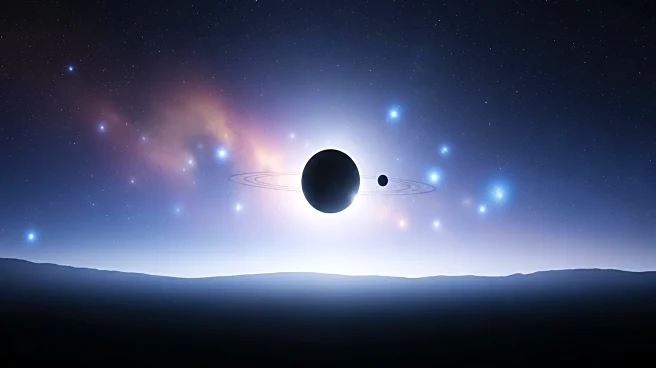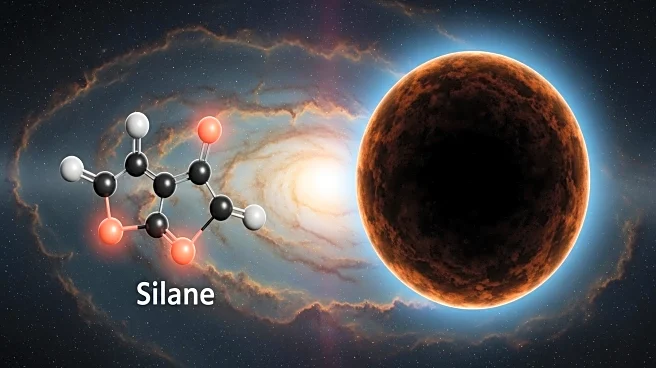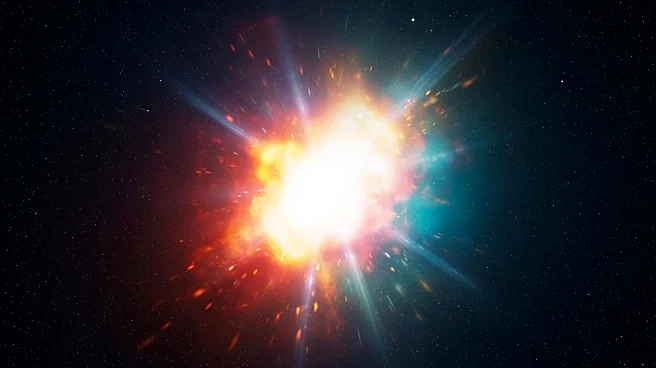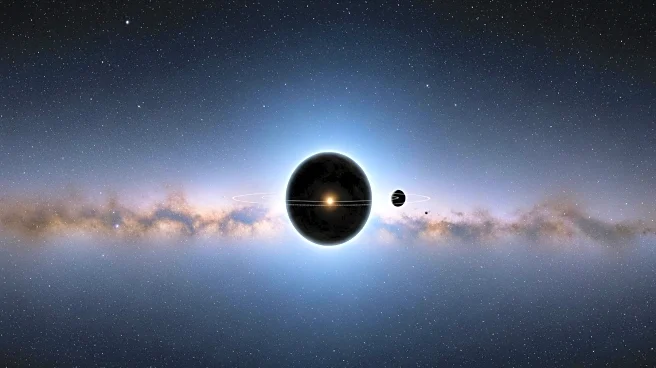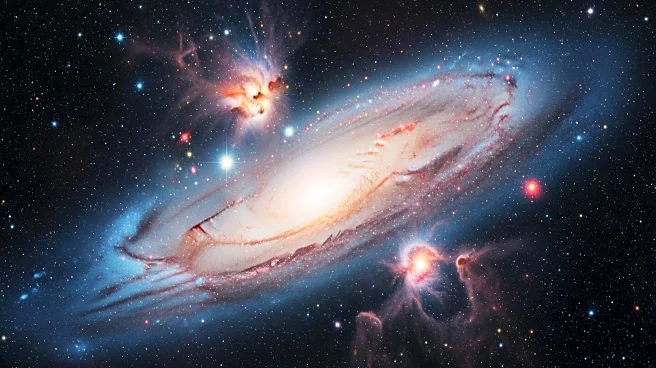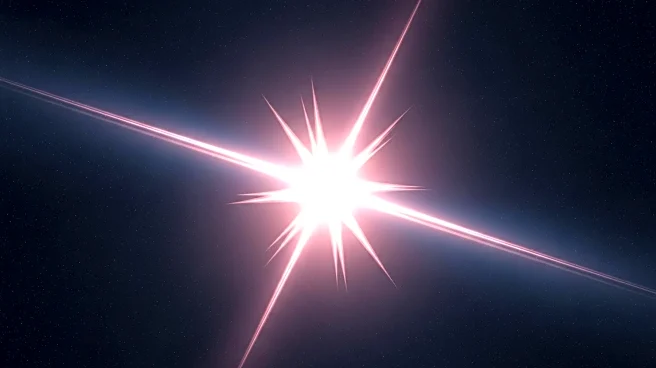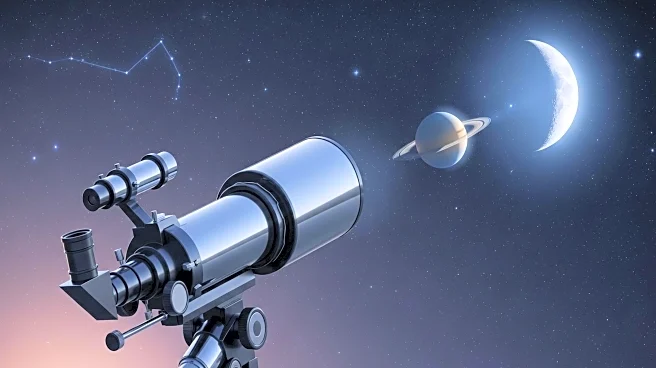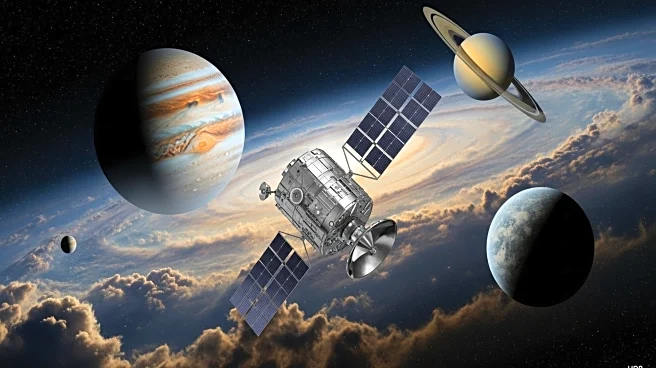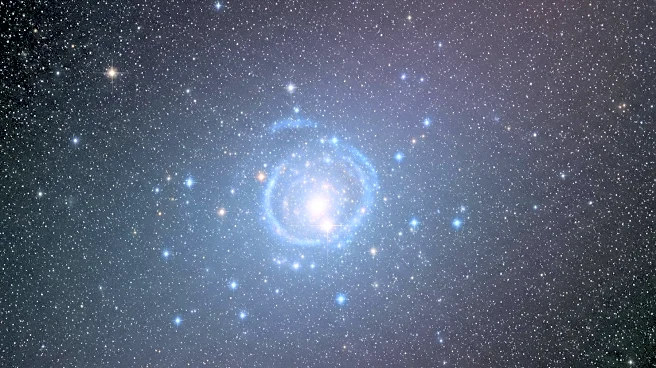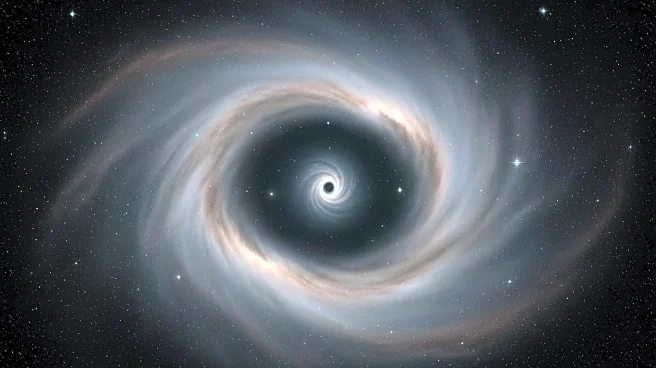What is the story about?
What's Happening?
Astronomers have potentially discovered a new moon orbiting the distant dwarf planet Quaoar, located in the Kuiper Belt beyond Neptune. This discovery was made during a stellar occultation event on June 25, 2025, when Quaoar passed in front of a distant star. The unexpected dimming of the star's light suggested the presence of a previously unknown object, likely a moon or a dense ring. Quaoar, already known to have two rings and a moon named Weywot, presents a unique planetary system that challenges existing theories about ring and moon formation.
Why It's Important?
The discovery of a new moon or ring around Quaoar adds complexity to our understanding of planetary systems, particularly in the Kuiper Belt. This region of the solar system is home to many icy bodies, and studying them can provide insights into the early solar system's formation and evolution. The existence of rings outside Quaoar's Roche limit, where moons typically form, challenges conventional theories and suggests new dynamics at play. This finding could lead to a reevaluation of how rings and moons form around distant celestial bodies.
What's Next?
Further observations and imaging, particularly from the James Webb Space Telescope, are needed to confirm the nature of the newly discovered object around Quaoar. These studies will help determine whether it is indeed a moon or another ring. Understanding the Quaoar system's dynamics could provide broader insights into the formation of planetary systems in the outer solar system and beyond. Continued exploration of the Kuiper Belt will likely reveal more about the processes that govern the formation and evolution of distant planetary bodies.
AI Generated Content
Do you find this article useful?
